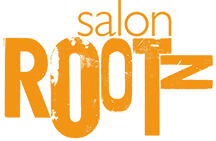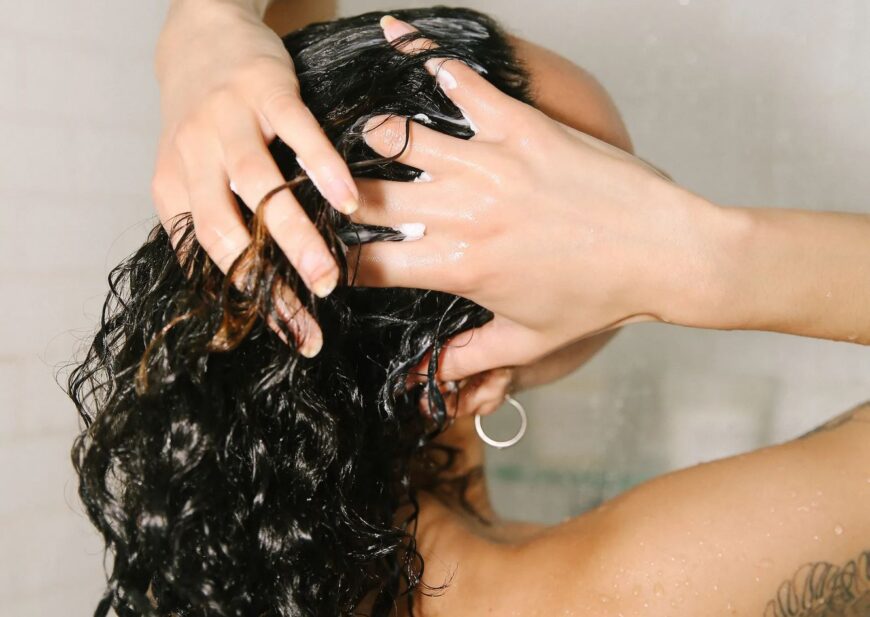IS BLOW DRYING BAD FOR HAIR?
There are two options when it comes to drying your hair — going au naturel via air-drying, or reaching for your hair dryer. But is blow drying your hair really that bad for it? And how do you blow dry your hair properly? We’re breaking it all down ahead!
How does blow-drying damage hair?
Any amount of heat can be damaging to the hair, so using a blow dryer (or flat iron, or curling wand) every day is not ideal. Daily heat exposure leads to heat damage including split ends and dry, brittle strands that break off. To understand how, let’s take a closer look at the anatomy of a hair strand:
- Cuticle: The outer layer of the hair fiber, made up of overlapping scales that are either closely aligned (in straight hair types) or loosely arranged (in curly hair types).
- Cortex: The middle layer of the hair fiber, consisting of keratin proteins and structural lipids.
- Medulla: The innermost layer of the hair fiber, made up loosely packed cells in a disorganized manner (present in coarse hair types).
- Cell membrane complex (CMC): The glue that holds hair cells together. There are three types: cuticle–cuticle, cuticle-cortex, and cortex-cortex.
Prolonged exposure to heat causes tiny bubbles to form inside the hair shaft, disrupting the cuticle and breaking apart protein bonds. This weakens strands, making them more prone to dryness and brittleness. In other words, frizz, tangles, and breakage.
Air drying vs. blow drying
Whether you choose to air dry or blow dry there isn’t much evidence to suggest either is better for your hair than the other. In fact, air-drying your hair can be just as damaging as blow drying. Hair can absorb up to 30% of its own weight in water, which typically makes it weaker and more susceptible to breakage. Air-drying takes time; the longer hair stays wet, the more the cortex swells and cracks, permanently damaging it. Ultimately, both techniques could cause some element of damage if not done correctly, but it all comes down to personal preference. If you want to let your hair dry naturally, it pays to squeeze out every last drop of water with a microfiber towel and invest in a silk pillowcase to reduce the amount of friction on hair as you sleep. If you prefer to blow dry your hair, always prep your strands with a blow dry primer to fight frizz.
Blow drying according to hair type
Here’s how to blow dry your hair according to hair type.
Curly hair
If you have curls, mastering a blowout requires a diffuser and Davines’ best products for curly hair. Squeeze the excess water out of your hair and apply product and heat protectant by using a scrunch method. Lightly place your curls on the claw of the diffuser, moving it close to the scalp, and then gently lifting your hair at the root to add volume. Dry your hair 80% of the way and allow 20% to air dry to keep strands from drying out and getting frizzy. Gently scrunch your hair to shape and form your curls.
Natural hair
Apply a leave-in conditioner and a heat protectant to your damp hair and use a wide tooth comb to detangle, and part your hair into four sections. On medium heat, hold the blow dryer at least 6 inches away from your hair, combing with a wide tooth comb until it’s 80 percent dry. Apply a hair oil and brush through with a paddle brush.
Wavy hair
If your curl type is wavy, a hair dryer brush is your best friend when it comes to frizz free curls. Scrunch your wet hair with a microfiber towel, then rake a heat protectant through your waves. Working with three-inch sections of hair at a time and starting at the roots, brush, wrap, and glide the brush through your hair. After a section is dry and you’ve released it from the brush, twist the warm section around your finger to allow it to cool in that shape. Once you’ve styled each section, smooth and twist a curl cream through the length of your hair to smooth flyaways and frizz.
Straight hair
To blow dry straight hair, you’ll need to use an extra-large round brush for volume. Apply a generous spritz of volume spray on the roots of your hair and lightly spritz the mid-shafts before blow drying upside down. Rough dry your hair with your fingers, then, once your hair is 90% dry, flip it back up and part it all the way back creating two sections on either of your head. To finish, take your round brush and smooth your ends back with your blow dryer. Set your blowout with a medium-hold hair spray.
Common blow drying mistakes
If you find yourself asking “why does my hair look frizzy after I blow dry” — you might be making one or more of these common mistakes:
- You’re using too hot of a setting. While blow drying your hair on the hottest setting may get the job done faster, it’s not good for your hair. You should adjust your heat setting and airflow setting depending on your hair type. For fine or thin hair, a low to medium heat setting is ideal. Thicker hair can withstand a higher setting.
- You’re not using a heat protectant. Heat from a blow dryer is damaging to your hair, leaving it dry, brittle and frizzy. So it’s important to protect your strands with a heat protectant spray before blow drying to prevent any damage.
- You’re using the wrong brush. For silky smooth results, use a brush with a lot of surface area. A big brush will give your hair room to dry while still brushing sections out smoothly. Opt for a traditional boar bristle brush or a nylon bristle brush. This tip is especially useful if you are prone to flyaways.
- You’re not using a nozzle, diffuser, etc. to achieve a certain style. The attachments that came with your blow dryer actually help you achieve specific blow drying effects. When you don’t use a nozzle, you are spraying hot air all over instead of concentrating the airflow exactly where you want. The right nozzle for you will depend on your hair type.
Hair health starts in the shower
Blow drying your hair with the least amount of damage starts in the shower. This means using a shampoo and conditioner formulated to address your hair type and concerns. Brush your hair before you get it wet in the shower to loosen dirt, remove any stray hair, and untangle knots. Use conditioner after every shampoo and turn down the heat. Water that’s too hot opens the hair cuticle, allowing keratin proteins to escape, so hair loses strength. But, don’t wash it every single time you step foot inside a shower. Your scalp produces natural oils that are important to shiny hair. So soaping them away too often will ultimately dry out your scalp, and lead to dry hair.
Protect and pamper
So how often should you blow dry your hair? A good rule of thumb is to go 3-5 days in between blowouts. If done correctly, they should last for several days. Stretch out time between blow drying with a dry shampoo to extend the life of your style. Our Hair Refresher absorbs excess oil, immediately giving body to hair so it looks full and airy. Our products are made with renewable energy and packaging that minimizes the environmental impact. Our hair care isn’t just good for your hair, it’s good for the planet.


Comments: